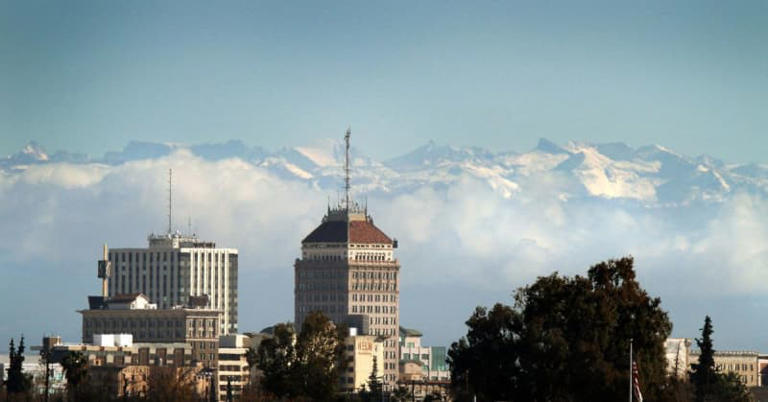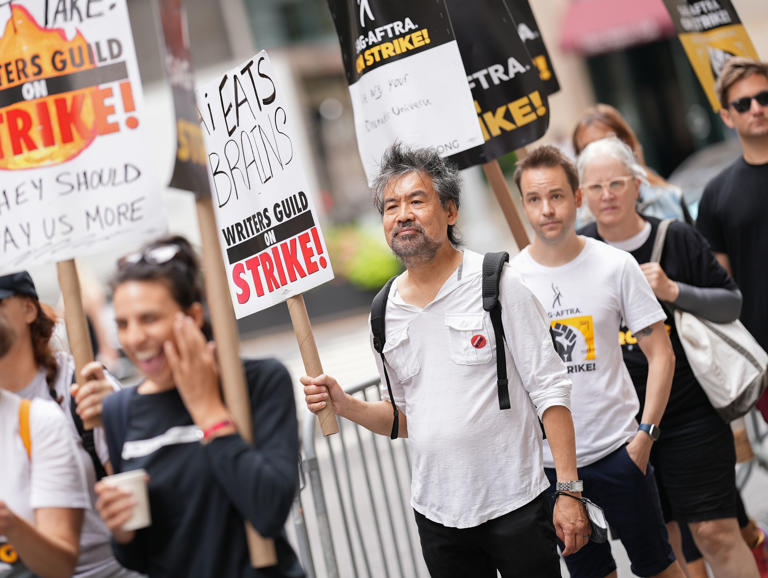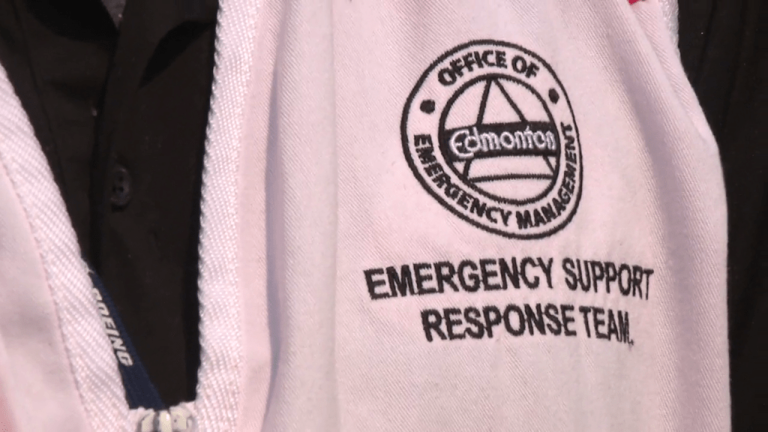Story by David Wetzel •
The negative health effects of alcohol and tobacco have been well-documented over the years.
However, a bigger threat to human life is lurking, according to the latest annual Air Quality Life Index report that was released Tuesday.
Knewz.com analyzed the report, which found that air pollution is responsible for reducing the life span globally by 2.3 years, making it the "greatest external threat to human expectancy."

Twenty of the 30 most polluted cities in the U.S. are in California. By: MEGA© Knewz (CA)
The report, produced by the Energy Policy Institute at the University of Chicago, noted that inhaling unclear air was comparable to smoking but five times more damaging than alcohol abuse, having unsafe water and car crash injuries.
According to the New York Post, 20 of the most polluted United States cities were located in California. It's likely that the state's vulnerability to wildfires is a main cause, putting residents at risk of breathing unsafe air.

A new report found that pollution is a bigger risk to humans' health than alcohol. By: MEGA© Knewz (CA)
In California, people are often exposed to high levels of particulate matter, which measure at or under 2.5 microns, causing damage to humans' brains and lungs.
In 2021, no countries across the globe met the World Health Organization's air quality standard of 5 micrograms of pollutants per cubic meter of air. If those standards were met, 3.2 million years of life could be saved, according to the Energy Policy Institute.
Most of the life lost via pollution comes from Africa and Asia, however. Those countries contribute more than 92 percent of the global life expectancy loss.

Wildfires play a major role in California's pollution problems. By: MEGA© Knewz (CA)
A main reason for the loss of life in those countries is that they don't have the appropriate infrastructure to address air quality.
“Three-quarters of air pollution’s impact on global life expectancy occurs in just six countries, Bangladesh, India, Pakistan, China, Nigeria and Indonesia, where people lose one to more than six years off their lives because of the air they breathe,” Michael Greenstone, Air Quality Life Index creator and Milton Friedman Distinguished Service Professor in Economics, said in a statement according to the New York Post.
Bangladesh, which has the most air pollution loses 6.8 years of life, compared to 3.6 months among Americans.

A new report states that air pollution is a bigger threat to human lives than tobacco use. By: MEGA© Knewz (CA)
Researchers believe more funding is needed to “collaboratively build the infrastructure that is missing today,” Christa Hasenkopf, director of the Energy Policy Institute air quality programs and AQLI, told the outlet.
“Timely, reliable, open-air quality data, in particular, can be the backbone of civil society and government clean air efforts — providing the information that people and governments lack and that allows for more informed policy decisions,” Hasenkopf said in a statement.
However, attempting to fix the air quality problem is a large task to tackle. In its "war against pollution," China has significantly reduced the problem, cutting pollution by 42 percent and gaining an average of 2.2 years in their people's lives.

The World Health Organization reports that 99 percent of people on earth are subject to unclear air. By: MEGA© Knewz (CA)
According to the WHO, 99 percent of the world is being subject to potentially toxic air.
“After surviving a pandemic, it is unacceptable to still have 7 million preventable deaths and countless preventable lost years of good health due to air pollution,” Dr. María Neira, the director of the WHO’s Department of Public Health and Environment, previously said, according to the New York Post.
“Yet too many investments are still being sunk into a polluted environment rather than in clean, healthy air.”







